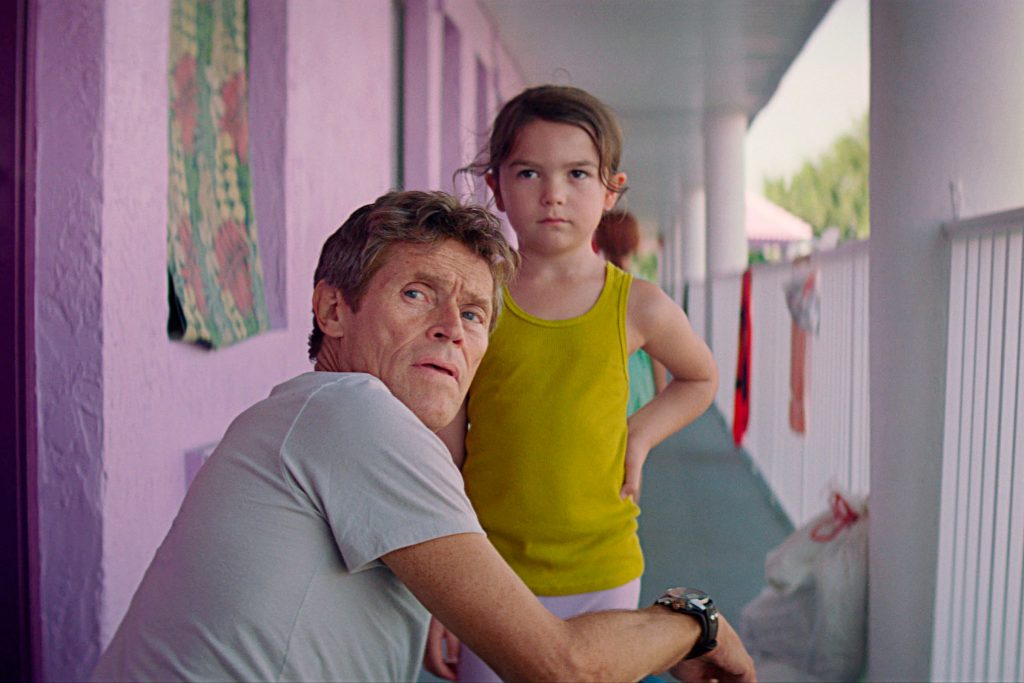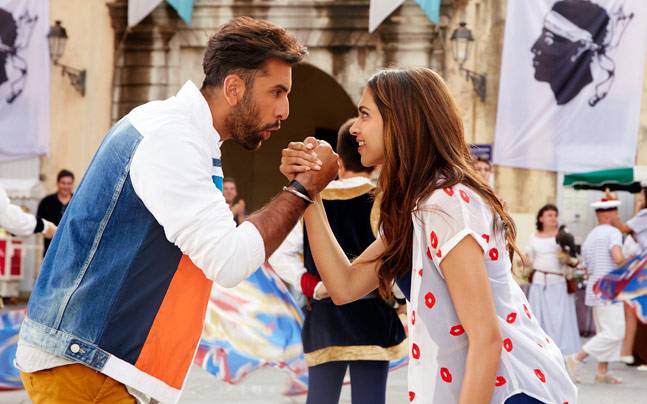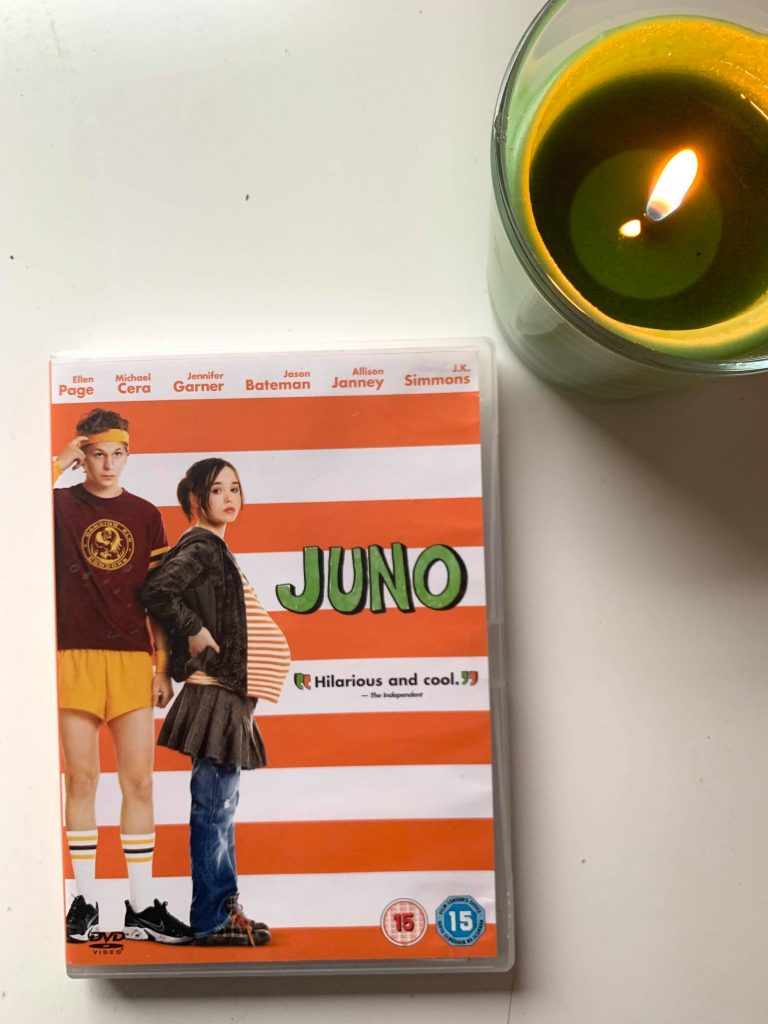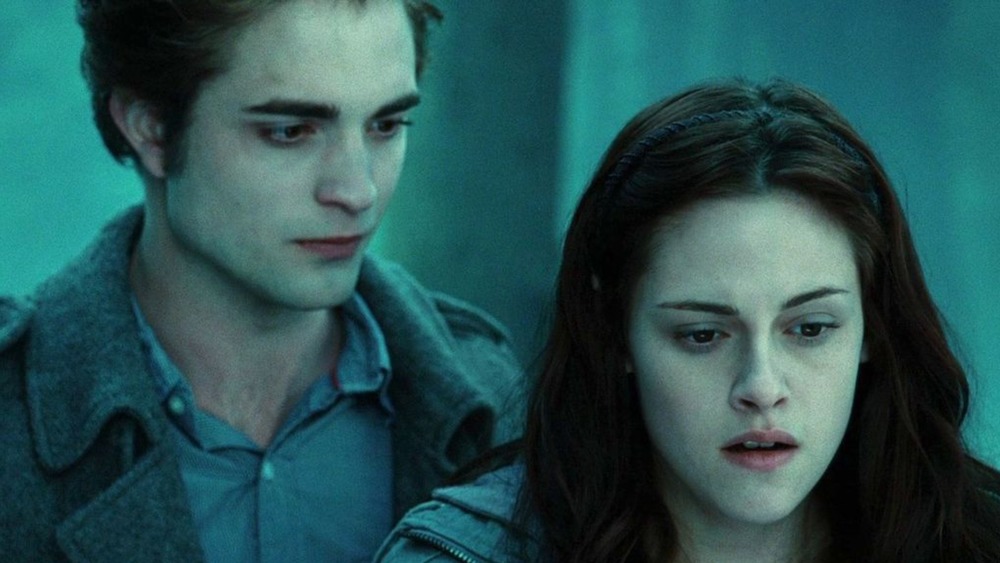The Florida Project (2017)
By Coby Barker

Sean Baker’s The Florida Project tells the story of struggling single mother Halley, her precarious six-year old Moonee and their life, situated just outside the utopia of Disney World, Florida. The camera shots guide us through a lens of childlike innocence highlighting dreamy pinks, the purples of their motel, the vibrant orange gift shop and the deep greenery of the surroundings, representing the playfulness of Moonee’s imagination and the infectious joy of her and her friends’ adventures. Even Halley’s shade of faded blue/green hair can be considered evocative of her inner child and how she has been forced to grow up.
The use of colour helps construct the humidity of the Floridian atmosphere, with bright blue skies and golden hour sunsets establishing a warmer tone, which does have a tendency to feel clammy and claustrophobic during more tense moments in the film. Additionally, we can see a contrast between The Florida Project’s central location and subject matter demonstrated via the rich purple shade of the ÔÇÿMagic Castle Inn’, a name and colour typically associated with lavishness and royalty. This bright, dominant palette is juxtaposed against the substantial darkness that poverty brings upon their lives, whilst simultaneously showing how intense and exaggerated the world feels to us in our youth.
Tamasha (2015)
by Chahat Gandhi

Tamasha is a 2015 Indian romantic film, written and directed by Imtiaz Ali. Filmed briefly in Corsica, a few Indian cities ÔÇô namely Shimla, Delhi, Gurgaon, and Kolkata; followed by a two-day schedule in Tokyo, the film features Ranbir Kapoor and Deepika Padukone in the lead roles.
Imtiaz Ali films have a certain comfort in them, something that feels like a warm, much-needed hug. Overall, the movie has an amazing colour palette which contrasts the bright and vivid hues of the island Corsica with the deep, dark and bold shades of the Indian cities Delhi and Kolkata.
What I really love about the colour scheme is how the movie plays with colours as it moves along, showcasing different emotions. The colours are arranged in a certain pattern that moves from bright to dark, to bright again as the story moulds.
Apart from the colour palette, the movie has a beautiful story and some really catchy tunes, definitely making it one of my favourites to watch. So, on days where you’re feeling a little lost, let Tamasha be your place of solace.
Juno (2007)
By Sophia Grace

When watching Juno it is impossible not to notice the intense use of the colour palette: oranges, yellows and browns/maroons. Colours were clearly a very important part of the creative process when this film was produced in 2007. At the beginning of this coming-of-age film, Juno played by Elliot Page, believes she is pregnant and drinks orange juice before taking a third pregnancy test, the significance is highlighted through the dialogue she has with the shop owner, who is also dressed in an orange shirt,
“I just drank my weight in Sunny D. and I have to go, pronto”
From this point on it is clear that the colour orange has huge significance to the plot and every aspect of the film. The title sequence also illustrates this with the animated main character walking along the streets of her hometown holding her Sunny D carton as the credits appear.
The colour palette of this movie also links the two main characters together. Paulie, who got Juno pregnant, wears bright yellow and maroon as part of his sports kit. He also has an affinity to orange Tic Tacs, so much so that Juno fills his mailbox with them to get his attention. These two characters share a very similar colour palette throughout the film, reminding the audience that they will always be linked in some way. Other characters, like Juno’s friend Leah, wears lots of blue and muted pinks but on occasion (and often when Juno needs support) she seems to wear similar tones to her — often green to complement the browns in Juno’s wardrobe.
I think that throughout this film, the bright colours serve as a reminder that even within a crisis there can always be some light or hope found. In this case, Juno’s baby is adopted by a loving mother and her friendship with Paulie still stays strong. The sweetness of this film is also amplified by the colour palette and the connotations of bright colours, especially the contrast they have alongside teen pregnancy, often a scary and worrying situation.
Twilight (2008)
by Francesca Ionescu

The first Twilight, as much as it was made fun of when it came out, can be appreciated a lot more now, especially for its creative choices. What makes it stand out from the other four Twilight movies is definitely the colour palette of greys and blue and green, with a rosy accent on the blood drained characters. The first Twilight had a heavy blue tint, like watching the world through ‘azure-coloured’ glasses. It made all the characters have a sunken look, with red lips and pale skin, and it completed the way all the characters dressed ÔÇô plain colours, layers, and lots of khaki.
The other four movies slowly lost this palette. As the original director Catherine Hardwicke was replaced, so was the unique look of the first movie. For New Moon, the second movie, the warm colour palette suited the subject; the movie moved away from the cold palette of vampires onto living, warm werewolves. The final three films of the saga simply lost their individuality, with no storyline-backed reason, which explains why I rewatch Twilight whenever I feel nostalgic. I’m more than happy to stop once the blue glasses of the first movie come off.
Instagram: @quenchfilm
Write for us: email filmtv@quenchmag.co.uk or join the Facebook group where all pitches are posted
Our articles: Film & TV


